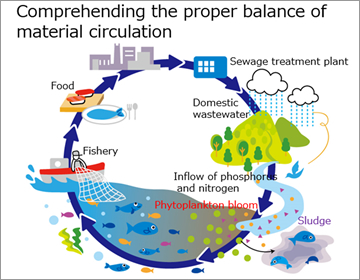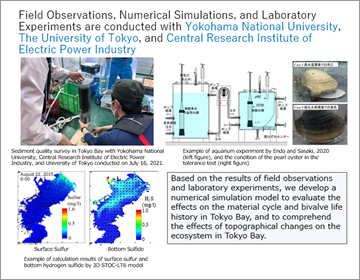FY2021 Grants-in-Aid for young researchers
POSTED:Jun 1, 2021
As a result of your support, we received 11 grant applications, even though we were in the process of declaring a state of emergency for COVID-19.
Six people have been selected as the grantees.
Call for research topic
The main topic of the research project is “Defining the Ideal Abundant Coastal Ecosystem”
Sub-themes
- Studying the relationship between historical changes in the supply of sand and nutrient materials from rivers, including dams, and the changes in coastal ecosystems under their influence.
- Clarifying the dynamics of material circulation including suspended, adherent and benthic organisms due to artificial structures such as coastal and harbor dikes, reclamation, dredging and marine gravel extraction, and their chronological changes.
- Investigating the differences in the dynamics of material circulation including suspended, adherent and benthic organisms between sea areas with and without fish farms.
| Title | Name | |
|---|---|---|
| Recovery of short-necked clam, Ruditapes philippinarum, resources by using mesh bags on the sandy tidal flats in Ariake Bay, Japanmore… | Tomohiro Komorita | Department of Environmental & Symbiotic Sciences Faculty of Environmental & Symbiotic Sciences Prefectural University of Kumamoto |
| Influences of coastal development on regional scale water and material dynamics in the Seto Inland Sea (Part 2)more… | Yusuke Nakatani | Department of Civil Engineering, Osaka University |
| Study on environmental load reduction by benthic organisms in aquaculture areas (Part 2)more… | Takero Yoshida | Department of Ocean Sciences, Tokyo University of Marine Science and Technology |
| Historical changes of the supply of silica in the coastal areas and its effects on community structure in tidal flat ecosystemsmore… | Megumu Fujibayashi | Department of Urban and Environmental Engineering Faculty of Engineering Kyushu University |
| The insights of material cycles in oyster farms using organic compound analysismore… | Masatoshi Nakakuni | Faculty of Agriculture, Kagawa University |
| Comprehending the effects of topographical changes due to reclamation and dredging on the bivalve life history in Tokyo Baymore… | Hiroto Higa | Graduate School / Faculty of Urban Innovation (IUI), Yokohama National University |
Recovery of short-necked clam, Ruditapes philippinarum, resources by using mesh bags on the sandy tidal flats in Ariake Bay, Japan
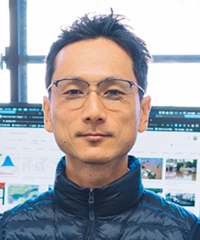
Division of Environmental Resources
Department of Environmental & Symbiotic Sciences
Faculty of Environmental & Symbiotic Sciences
Prefectural University of Kumamoto
Assoc. prof.Tomohiro Komorita
My name is Tomohiro Komorita, and I work at the Faculty of Environmental Symbiosis at the Prefectural University of Kumamoto. I am pleased to have been selected for the Grants-in-Aid for Young Researchers in 2021 for the above-mentioned project. This grant will prove me with the resources to develop my research and provide me with an opportunity to receive guidance from distinguished professors, which I believe will be of utmost importance to the future development of my career. I will do my best to live up to the honor of the research grant, and I look forward to working with you in the future.
My main study topic is “How can we make a smooth material cycle in coastal areas to use biological production sustainably?” Remarkably, the Ariake Bay, my primary field of study, has one of the most extensive sandy tidal flats in Japan. We found that bivalve communities living in vast tidal flats consume all the local primary production. Although there is still high productivity of bivalve populations in the tidal flats from Ariake Bay, the catch of short-necked clams and hard clams are at a low level. Around 2010, a technology for promoting clam settlement with gravel in a nylon mesh bag was reported, and it is being used nationwide.
However, to operate the mesh bag more efficiently, it is necessary to determine “where should we put it?” To answer this question, I focused on the results of the clam survey conducted on the Midori River mouth tidal flats in the Kumamoto prefecture and summarized the survey results for the past 20 years. I predict that the number of juvenile clams caught in the mesh bags corresponds to the presence or absence of juvenile clams in the past; Therefore, if I put the mesh bags in locations with high and low clam abundance in the past 20 years, the results will differ significantly. If this prediction is correct, it will be able to propose an operational method to maximize the effect of the mesh bag.
I have summarized previous literature on mesh bags and noticed the mortality rate of clams inside and outside the mesh bag varies from place to place. If clam density decreases inside and outside the bag, common factors (i.e., low salinity and low concentration of food resources) should be related. If the clam density decreases only outside the bag, the factors alleviated by the bag (i.e., transported by tidal current and predation) should affect it. Therefore, by monitoring environmental factors with sensors, I could clarify the factors causing such a decrease in the clam resources in this area. I want to contribute to the recovery of clam resources by integrating these findings.
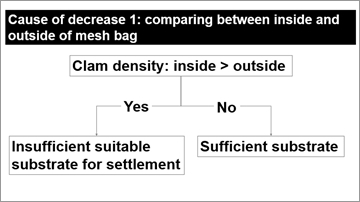
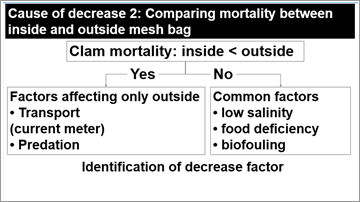
Influences of coastal development on water and material dynamics at regional scale in the Seto Inland Sea(Part 2)
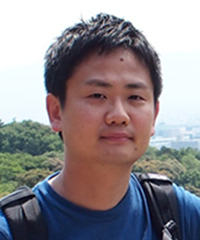
Department of Civil Engineering
Graduate School of Engineering
Osaka University
Asst. prof. Yusuke Nakatani
I received my Ph.D. from Osaka University in March 2012, and after working at the University of Tokyo for one year, I joined the Water Engineering Laboratory of the Civil Engineering Course at Osaka University in April 2013. I am engaged in research on water environment in lakes, rivers, watersheds, and coastal areas using field surveys, numerical analysis, AI, and other methods. For more information, please visit my website (https://researchmap.jp/nakatani_civil_osaka).
In this support program, I will continue to work on the research project “Evaluation of the impact of coastal development on the water and material cycle at the regional scale in the Seto Inland Sea”. In the Seto Inland Sea, many landforms have been altered as a result of reclamation of the sea and construction of breakwaters. Although coastal development is unavoidable in the future for disaster prevention, port development, and waste disposal, it is important to manage coastal ecosystems based on a correct understanding of their impact on the water environment. The effects of geomorphological alteration on the water environment have been evaluated at the port scale, focusing on the effects on the vicinity of projects, but in fact, the effects on the bay and open sea scale have not been fully evaluated. However, in Osaka Bay, for example, it has recently been found that geomorphological alteration of the head of the bay not only locally alters the water environment at the port area scale, but also has a non-negligible effect on the residual current and water quality structure at the bay scale, as well as on the currents and material balance in the adjacent waters. In this research project, I aim to extend my study of Osaka Bay to the whole area of the Seto Inland Sea and to clarify the effects of geomorphological alteration on water and material cycles in the Seto Inland Sea by using a state-of-the-art 3-D numerical model. Last year, I constructed a high-resolution 3-D flow model for the entire Seto Inland Sea, including the open sea, and clarified how the flow, temperature and salinity structures, and water exchange between the bays have changed since the 1930s, when land reclamation was not yet underway. In the second year of the project, I will couple the flow model with a lower-order ecosystem model to analyze the effects of topographic changes on water quality and nutrient transport at the regional scale.
The numerical model constructed in this study is expected to be used to clarify the mechanisms of and examine the measures for various water environmental problems (such as red tide, hypoxia, eutrophication, oligotrophication, and COD management) that the Seto Inland Sea is currently facing. I would like to use this research as a starting point for future research on the water environment of the Seto Inland Sea, and hope to present results and knowledge that will contribute to our society.
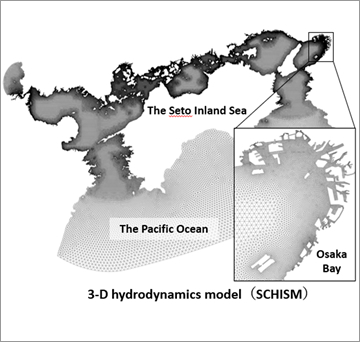
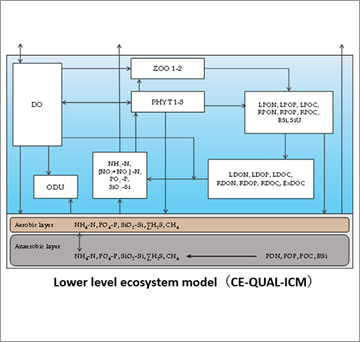
Study on environmental load reduction by benthic organisms in aquaculture areas (Part 2)
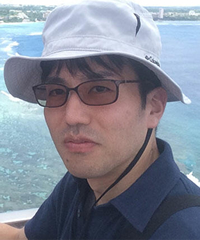
Department of Ocean Sciences, Tokyo University
of Marine Science and Technology
Assis. prof.Takero Yoshida
I obtained a PhD (environmental studies) from the Department of Ocean Technology, Policy, and Environment, Graduate School of Frontier Sciences, the University of Tokyo in March 2013. I am engaged in research on the marine environment and biology. In particular, I aim to use the ocean in harmony with the environment, and am engaged in research aimed at coexistence and co-prosperity between the ocean and humankind. This research will be carried out in collaboration with the Marine Ecosystem Engineering Laboratory, Institute of Industrial Science, the University of Tokyo. As an outline of this research, we will conduct research on the environmental load reduction effect of benthic organisms in the aquaculture area in order to protect the environment. Aquaculture is mainly carried out in coastal areas, but self-contamination (the excrement and residual food of farmed fish deteriorates the surrounding environment and negatively affects the growth of farmed fish) reduces productivity. Therefore, the purpose of this study is to examine the effect of absorbing the excrement of farmed fish by the benthic organisms to reduce the environmental load on the coastal farm and reduce the risk of productivity. In this study, we will consider the environmental improvement effect of benthic organisms by numerical simulations with simulating aquaculture areas and biological growth tests in actual sea areas. We assume a domestic coho salmon farm, and we are considering targeting benthic organisms such as sea cucumbers and gunnels. In this study, we will further improve the flow field / ecosystem coupling numerical model to include the effects of benthic organisms around the coho salmon aquaculture cage. For the field test, we are considering installing a box net under the cage to verify the effect of raising benthic organisms and reducing the environmental load. In addition, as a development of benthic organism monitoring technology, in order to examine how much the excrement of the farm is absorbed by grasping the type and number of benthic organisms around the cage, we will develop basics of submarine-mounted underwater cameras for monitoring benthic organisms. We will examine whether it is possible to monitor benthic organisms gathering under the cage by installing an underwater camera on the seabed for a long period of time. Through these studies, we aim to form a basis for measuring and understanding the effects of benthic organisms in actual aquaculture farms in the future.
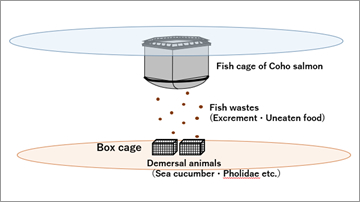
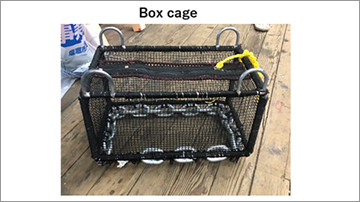
Historical changes of the supply of silica in the coastal areas and its effects on community structure in tidal flat ecosystems
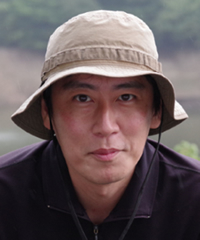
Department of Urban and Environmental Engineering
Faculty of Engineering Kyushu University
Assis. prof.Megumu Fujibayashi
I would like to offer my sincere gratitude regarding my selection for EMECS Grants-in-Aid for young researchers and for providing me with the opportunity to conduct this research. While participating in the first meeting for the committee of selectors and discussing my research plan with the advisors, I realized that this system focuses not only on providing financial support to the researchers, but also aims to offer guidance to the young generation. The list of probable research topics that were presented during the public recruitment process included suggestions regarding the focus areas in scientific research related to coastal areas; this provided a great guideline for reflecting upon my research plan. I had already started nurturing my research idea from the time when the research themes were presented, and I hope to conduct my current research work in a manner that will meet your expectations.
I am interested in the dynamics of fatty acids in the aquatic ecosystems. Fatty acids can be used as indicators of the quality of dietary sources in the fisheries sector. Moreover, they are also useful as tracers of diets and food chain structures in the field of ecology. My aim is to make use of both of these beneficial aspects of fatty acids and offer recommendations for: (1) designing suitable measures for the preservation of the aquatic ecosystems, (2) managing and maintaining a healthy water environment, and (3) developing eco-engineered water purification technologies, based upon aquatic food webs.
Eicosapentaenoic acid (EPA), a polyunsaturated fatty acid, is known to improve the growth and survival rates of aquatic animals when it is present as a food-source in sufficient amounts in the aquatic ecosystem. Previous our studies have shown that the levels of EPA may be a limiting factor for the species diversity as well as the total biomass in the natural aquatic ecosystems (Figure 1). Therefore, I have formulated an “EPA hypothesis” which states that ensuring an adequate supply of EPA may be effective in maintaining and managing healthy aquatic ecosystems.
With respect to the topic that is to be addressed in this research, I have focused my attention on silica, which is essential for the growth of microalgae diatoms that synthesize EPA. The main supply of silica in the coastal areas is derived from the inland, but this silica is considerably affected by human activities such as the building of dams and the inflow of wastewater. I believe that changes in the silica concentration can affect the growth of diatoms, resulting in changes in EPA production; this, in turn, can affect the structure of the coastal benthic communities. This research will be conducted at the Zuibaiji river basin in Fukuoka prefecture, and its aim is to assess the impact of the inflow from dams and sewage treatment water on the silica supply. Core samples will be collected from the estuarine area, and the relationship between silica supply in the past and the corresponding abundance of diatoms will be investigated (Figure 2). In addition, I will test the “EPA hypothesis” in the Imatsu tidal flats in the estuary.
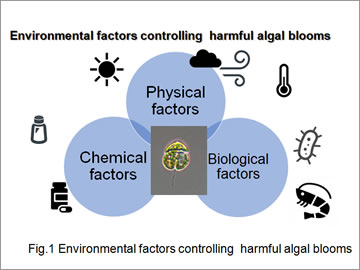
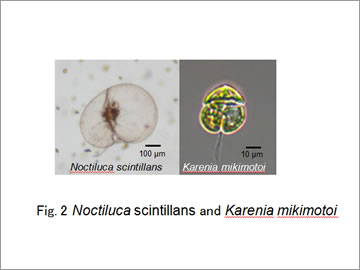
The insights of material cycles in oyster farms using organic compound analysis
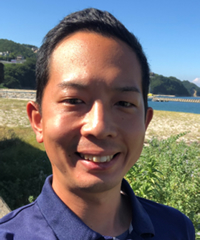
DFaculty of Agriculture, Kagawa University
Doctoral ResearcherMasatoshi NAKAKUNI
I would like to express my sincere gratitude to EMECS for choosing me as a recipient of the 2021 Grants-in-Aid for young researchers. I am a postdoctoral research associate at the Faculty of Agriculture, Kagawa University. I explore material cycles in the Seto Inland Sea in Japan, focusing on the Harima-Nada.
The theme of this research is “The insights of material cycles in oyster farms using organic compound analysis”. Oysters filter seawater and feed on microalgae, and thus, they purify the water quality in the sea area. On the other hand, it has been pointed out that oysters accumulate a large amount of organic particles by their feces, which results in organic material loading on the sea bed directly below the farms. The main theme of this study is “How are material cycles affected by oyster farms?” My goal is to clarify the material cycles by using organic biomarkers.
Organisms produce a wide variety of organic matter. The diversity of these organic matters can be used as biomarkers to track where the organic carbon is derived from. For example, eukaryotes have sterols such as cholestrol in their cell membranes; prokaryotes contain hopanols instead of sterols. Additionally, sterol compositions are different among microalgae. For example, 24-methylenecholesterol is abundant in diatoms; brassicasterol is found in pinnate diatoms; and 4-methylsterol is found in dinoflagellates. On the other hand, vascular plants, which have cell walls, have high-molecular compounds called lignin. In this study, I investigate the material cycle in oyster farming using these characteristics of organic compounds.
Furthermore, in this study, I also analyze the fatty acid composition of oysters and sea cucumbers. Essential fatty acids such as DHA and EPA are passed on to the higher trophic levels in marine food chain, starting from microalgae. Oysters feed on microalgae by filtration, and therefore, the fatty acid composition in oysters is expected to change in accordance with the seasonal changes in microalgae. Moreover, it has been known that sea cucumbers are found in abundance on the sea bed directly below oyster farms in this research area. If sea cucumbers feed on the settled particles generated from oyster farms, their fatty acid composition is expected to change seasonally, as is the case with oysters.
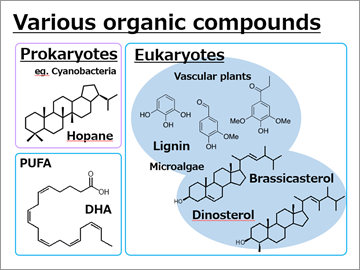
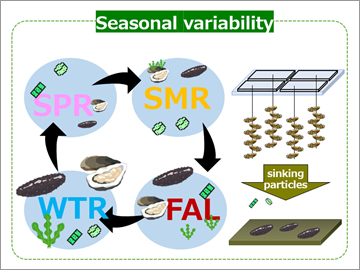
Comprehending the effects of topographical changes due to reclamation and dredging on the bivalve life history in Tokyo Bay
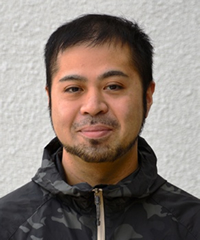
Graduate School / Faculty of Urban Innovation (IUI),
Faculty of Engineering Kyushu University
Assis. prof.Hiroto Higa
I am pleased to announce that I have been selected for a grant to support young researchers’ activities in 2021. I wrote my doctoral thesis on the “DevelopmentofOcean Color Remote Sensing Methods for Coastal Environment Monitoring” at the Department of Socio-Cultural and Environmental Studies, Graduate School of Frontier Sciences, the University of Tokyo, and have been working as an assistant professor at the Estuarine and Coastal Engineering Laboratory, Institute of Urban Innovation, Yokohama National University since April 2016.I am from Okinawa Prefecture, and when I was a university student, I wanted to do research on the sea of my hometown Okinawa, so I applied to be assigned to the water environment laboratory.Since then, I have been fortunate to be engaged in research related to the water environment.At the University of Tokyo, I was mainly involved in environmental observation using ocean color satellite data for coastal areas, but after arriving at Yokohama National University, I was also involved in field observations and numerical simulation of the blue tides in Tokyo Bay under Prof. Yoshiyuki Nakamura. I am now engaged in a wide range of research aimed at creating abundant natural water environments.
My research project is “Comprehending the effects of topographical changes due to reclamation and dredging on the bivalve life history in Tokyo Bay”.In Tokyo Bay, fish catches have been stagnant for a long time, and productivity is thought to have declined significantly.It is necessary to understand the balance of material circulation in the ecosystem, and to establish environmental standards and effective environmental management methods and measures for the enrichment of the coastal area. This study aims to develop a numerical model that represents the ecosystem in detail, considering the classical food webs and the microbial food webs, the material circulation between the bottoms of the water, and the life history of bivalves, and to quantitatively clarify the impact of coastal development on the ecosystem of Tokyo Bay.
